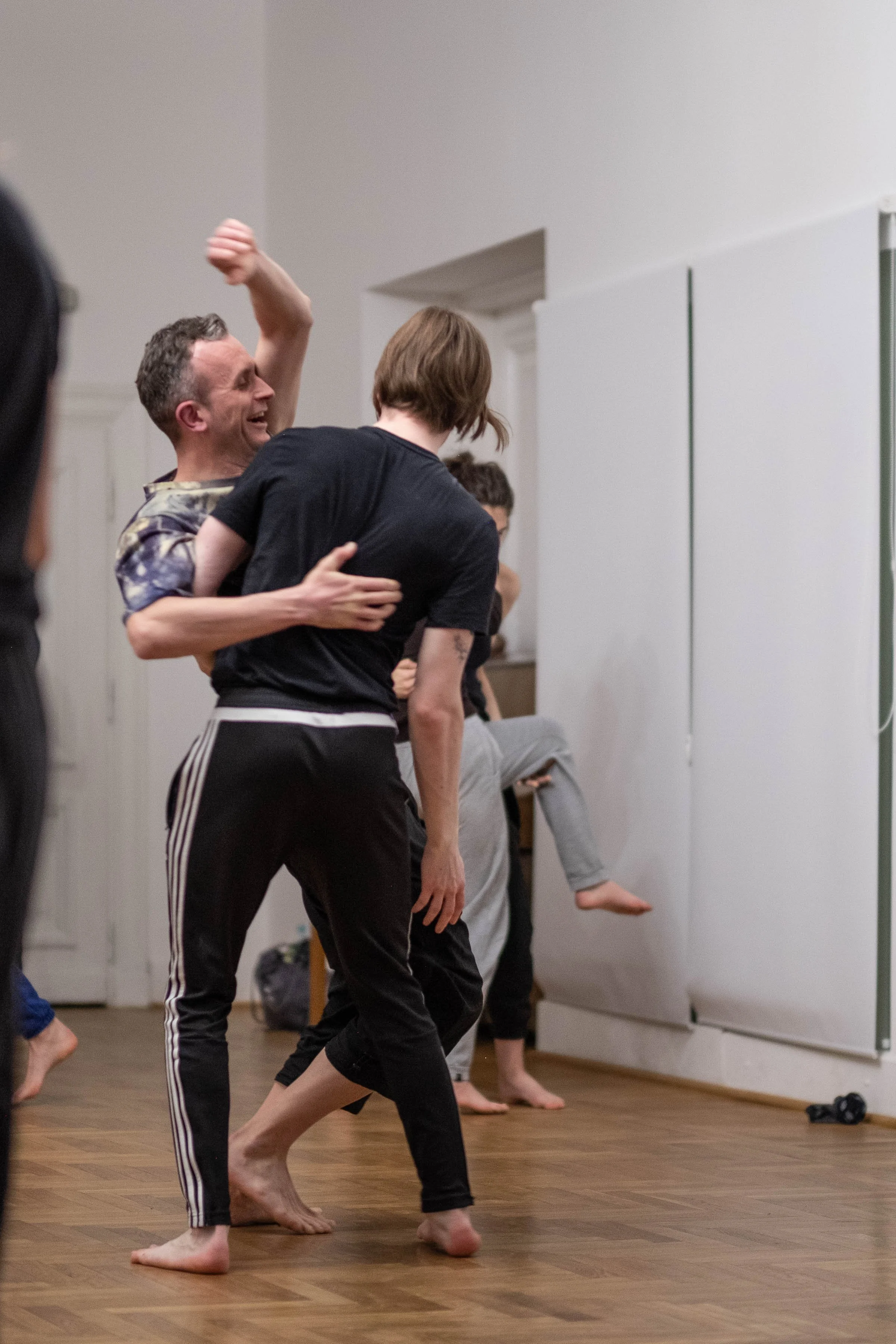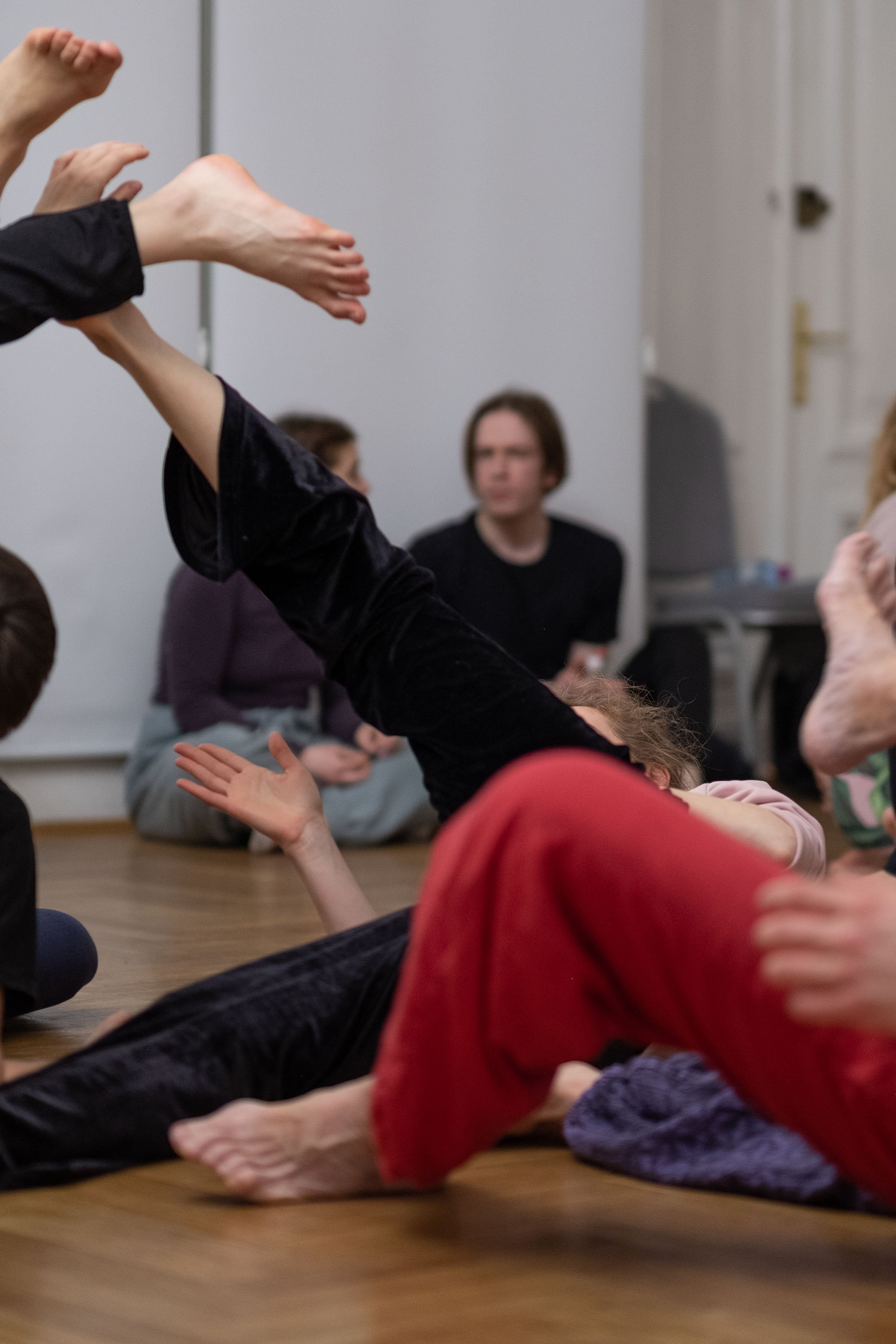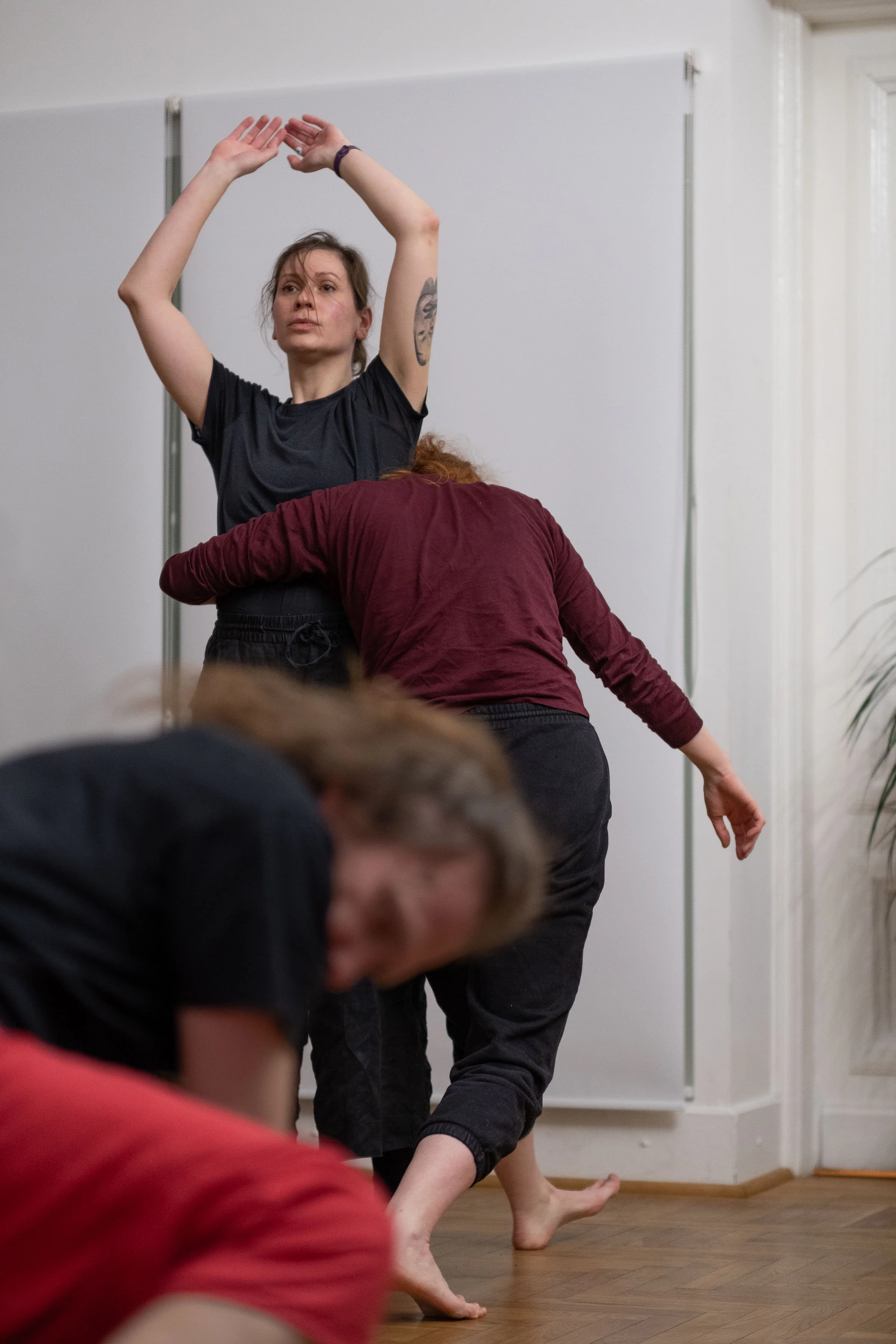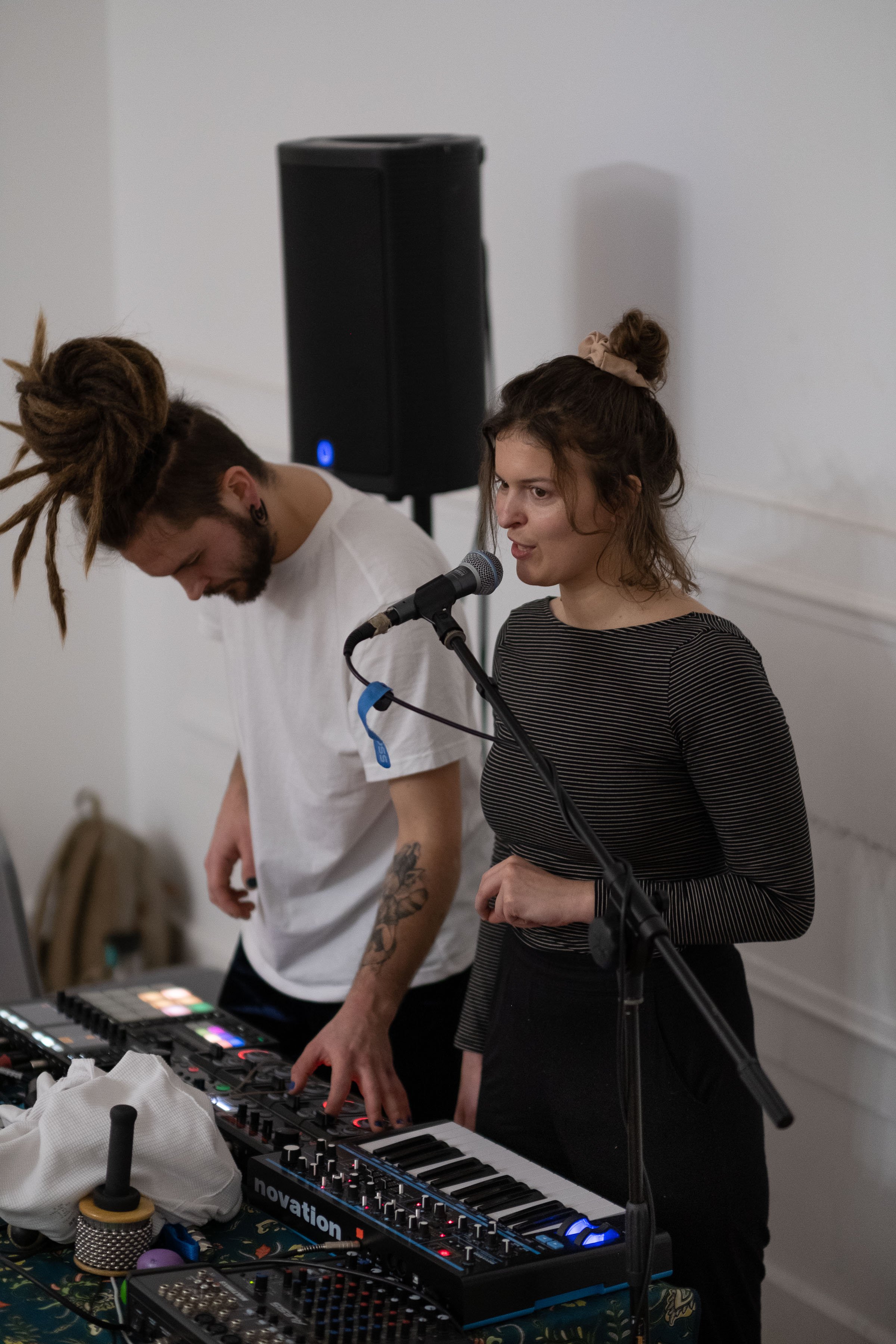If I embark on an essay about how contact improvisation has affected my life, or one about how I found my path to it, I will not post these photos within days of having taken them. Nor will I—yet—have the answers worth writing about. Give me time.
This was the second in a re-activated series of events held every other Sunday by the Perform Foundation’s Centralna Scena Tańca initiative in the beautiful dance spaces of Warsaw’s Masovian Cultural Institute. The crowd numbered thirty dancers or so. Multi-instrumentalist Phao Sanato was in charge of the music. Contact improvisation teacher Tomek Domański led the class that preceded the jam. I had asked the organizers a few days earlier if I could take some photos and the answer was yes, so I brought my camera and three of my prime lenses and an open mind.
People on the move are not like still lifes on a countertop. They don’t wait reliably until I’ve set up my frame and then they don’t wind up looking the way I decided they’d look best. Photographing bodies in motion is an altogether different experience from the kind of picture-taking I do with more confidence, though, surprisingly, it’s just as much about composition, documentation, and patience. It’s just that it’s a race of sorts—and a hunt. Or maybe it is a dance.
I expected this might be a humbling experience or possibly a shock of euphoria. It was neither. Part cautious, part spontaneous, part meditative, it was a satisfying first attempt at something beautiful, made accessible thanks to a surprising amount of support, purpose, and balance.
All photos taken in ambient light with the Fuji X-T20 and the dreamy-yet-exacting Fujinon 56mm f/1.2 lens. Posted with permission from the participants and event organizers—and with my heartfelt thanks to everyone involved.



































